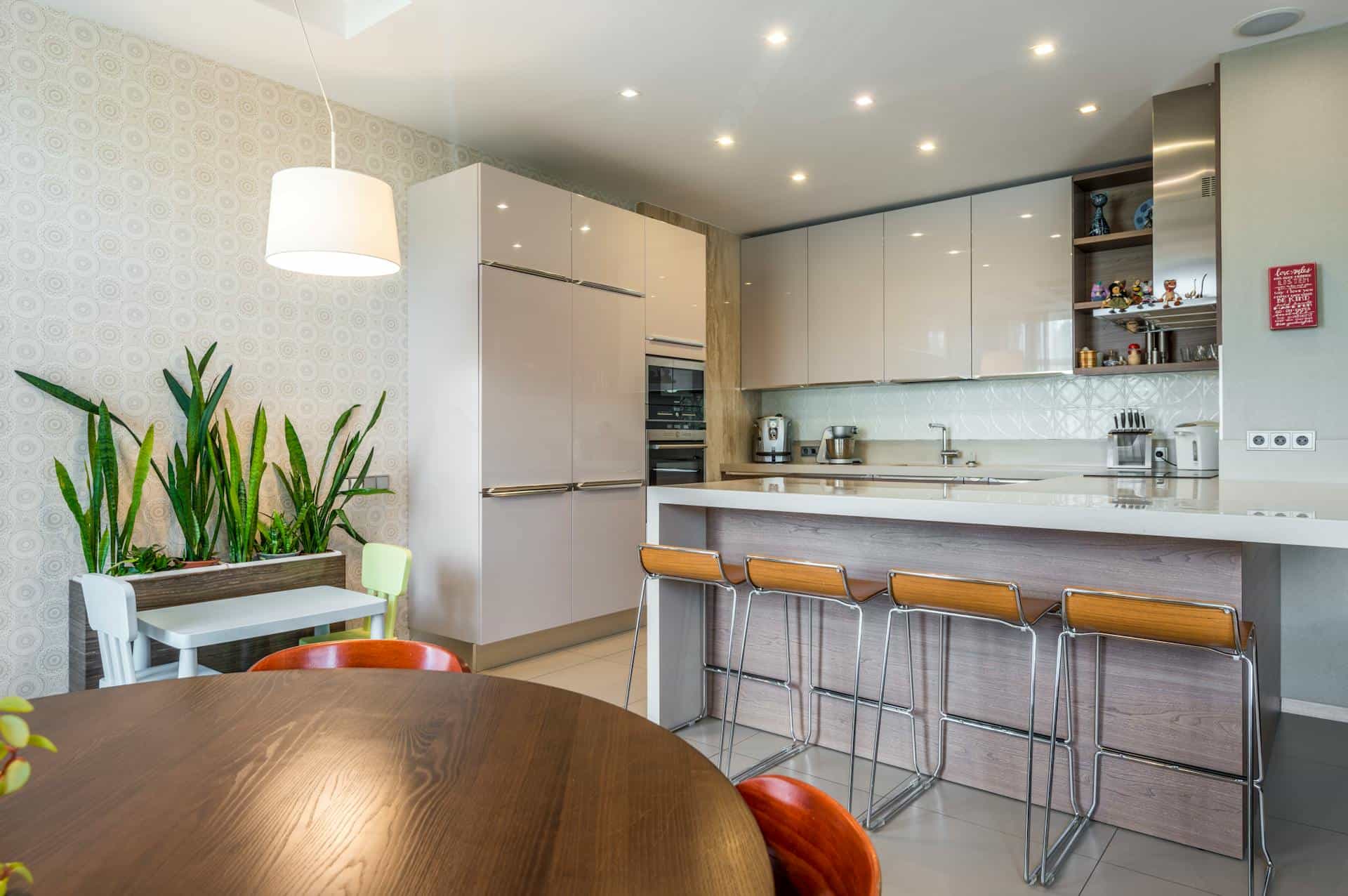
Question: What Type of Recessed Lighting is Best For a Kitchen?
Answer: Types of recessed lighting that are best for a kitchen includ LED wafer lights are energy-efficient and offer excellent illumination. For focused light, consider adjustable eyeball trims. Baffle trims reduce glare.
Illuminating Your Culinary Space: Choosing the Right Recessed Lighting
Kitchen lighting plays a crucial role in both function and ambiance. Recessed lighting offers a sleek, modern solution for general illumination and task lighting. This article explores the different types of recessed lighting, helping you select the best option for your kitchen.
Types of Recessed Lighting
Several types of recessed lights exist, each with unique characteristics. Understanding these differences simplifies your selection process.
Can Lights:
The most common type, can lights, feature a housing that sits inside the ceiling. They come in various sizes and trims. Can lights provide focused light, useful for general illumination or highlighting specific areas.Eyeball Lights:
Eyeball lights offer adjustable direction, making them excellent for accent lighting or highlighting artwork. These lights rotate and pivot, allowing you to direct the light beam.Wall Wash Lights:
Wall wash lights distribute light evenly across a wall, perfect for displaying textures and artwork. They create a soft, diffused glow, adding dimension to the room.Gimbal Lights:
Similar to eyeball lights, gimbal lights adjust and tilt. The key difference lies in their wider range of motion, making them ideal for highlighting architectural details or objects on countertops.
Click this link for more information about Blue Kitchen Refacing
Related Article: Where Should Lights Be Placed Over Kitchen Sink?
Related Article: Can You Have Too Many Recessed Lights In a Kitchen?
Size and Spacing: Key Considerations for Optimal Lighting
Choosing the right size and spacing for your recessed lights ensures even illumination throughout your kitchen. Consider ceiling height, room size, and the primary function of each light.
For general lighting, space lights evenly across the ceiling. For task lighting, focus lights over specific areas like countertops and islands. Common sizes include 4-inch, 5-inch, and 6-inch diameter lights.
A good rule of thumb is to divide the ceiling height by two to determine spacing. For example, in an 8-foot-high kitchen, space lights approximately 4 feet apart.
Color Temperature: Setting the Mood in Your Kitchen
Color temperature affects the ambiance of your kitchen. Measured in Kelvin (K), color temperature ranges from warm to cool.
Warm White (2700K-3000K):
Warm white creates a cozy, inviting atmosphere. This color temperature mimics the glow of incandescent bulbs, ideal for relaxed settings.Neutral White (3500K-4100K):
Neutral white provides a balanced, natural light, suitable for most kitchens. It offers good visibility for food preparation and general tasks.Cool White (5000K-6500K):
Cool white offers a crisp, clean look, ideal for modern kitchens. This color temperature mimics daylight, enhancing visibility for detailed tasks.
Installation and Safety: Professional vs. DIY
Installing recessed lighting requires electrical knowledge. While some homeowners opt for DIY installation, hiring a qualified electrician ensures safety and proper wiring. Improper installation can create fire hazards.
An electrician will also ensure compliance with local building codes. They can advise on the best placement for your recessed lights and recommend appropriate fixtures for your kitchen’s specific needs.
Trim Options: Aesthetics and Functionality
Recessed lighting trims serve both aesthetic and functional purposes. They frame the light source and influence light distribution.
Baffle Trim:
Baffle trim reduces glare, creating a comfortable, diffused light. It’s a popular choice for general kitchen lighting.Reflector Trim:
Reflector trim maximizes light output, making it suitable for task lighting. The reflective surface directs light downwards, increasing brightness.Wall Wash Trim:
Wall wash trim creates a soft, even wash of light on vertical surfaces. It’s ideal for highlighting artwork or textured walls.Open Trim:
Open trim offers maximum light output but can also produce glare. It’s typically used in areas requiring high visibility.
Conclusion
Choosing the right recessed lighting for your kitchen involves considering several factors, including the type of light, light source, size, spacing, color temperature, and trim options. By understanding these elements, you can create a lighting scheme that enhances both the functionality and aesthetic appeal of your culinary space. [ 1 ]
References
1. https://blog.recessedlighting.com/led-recessed-lights/

Blue Malue Get in touch with Blue here.
